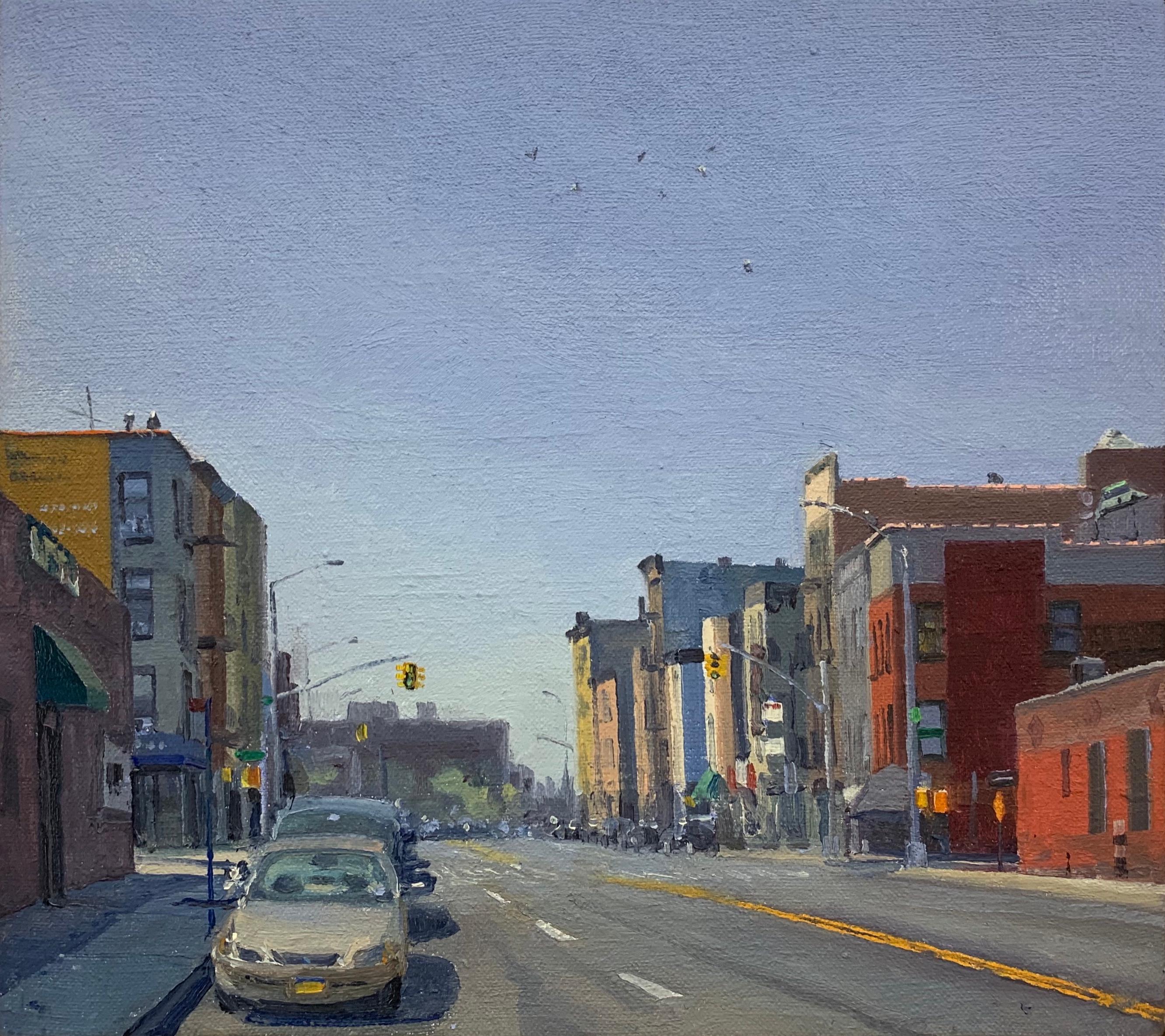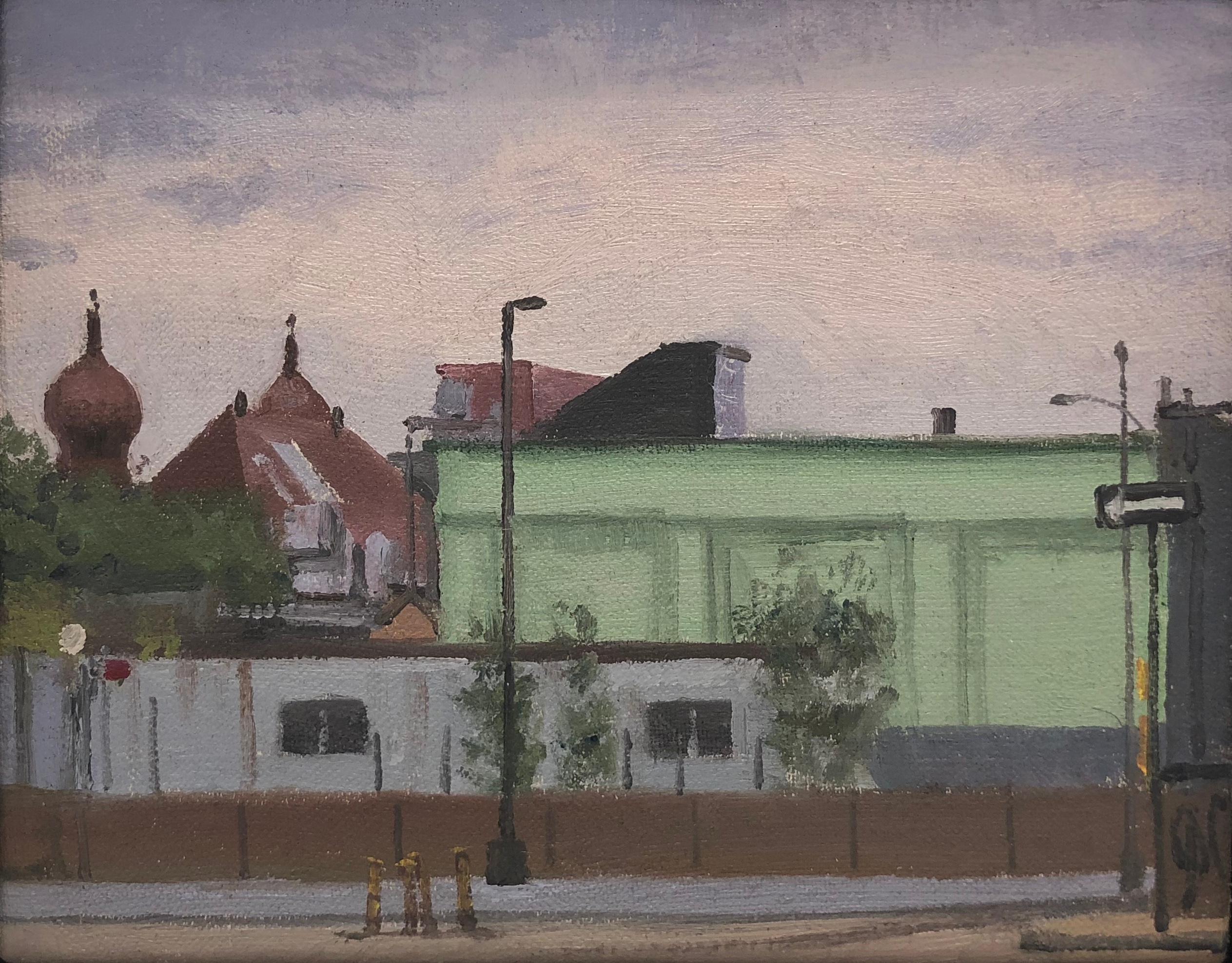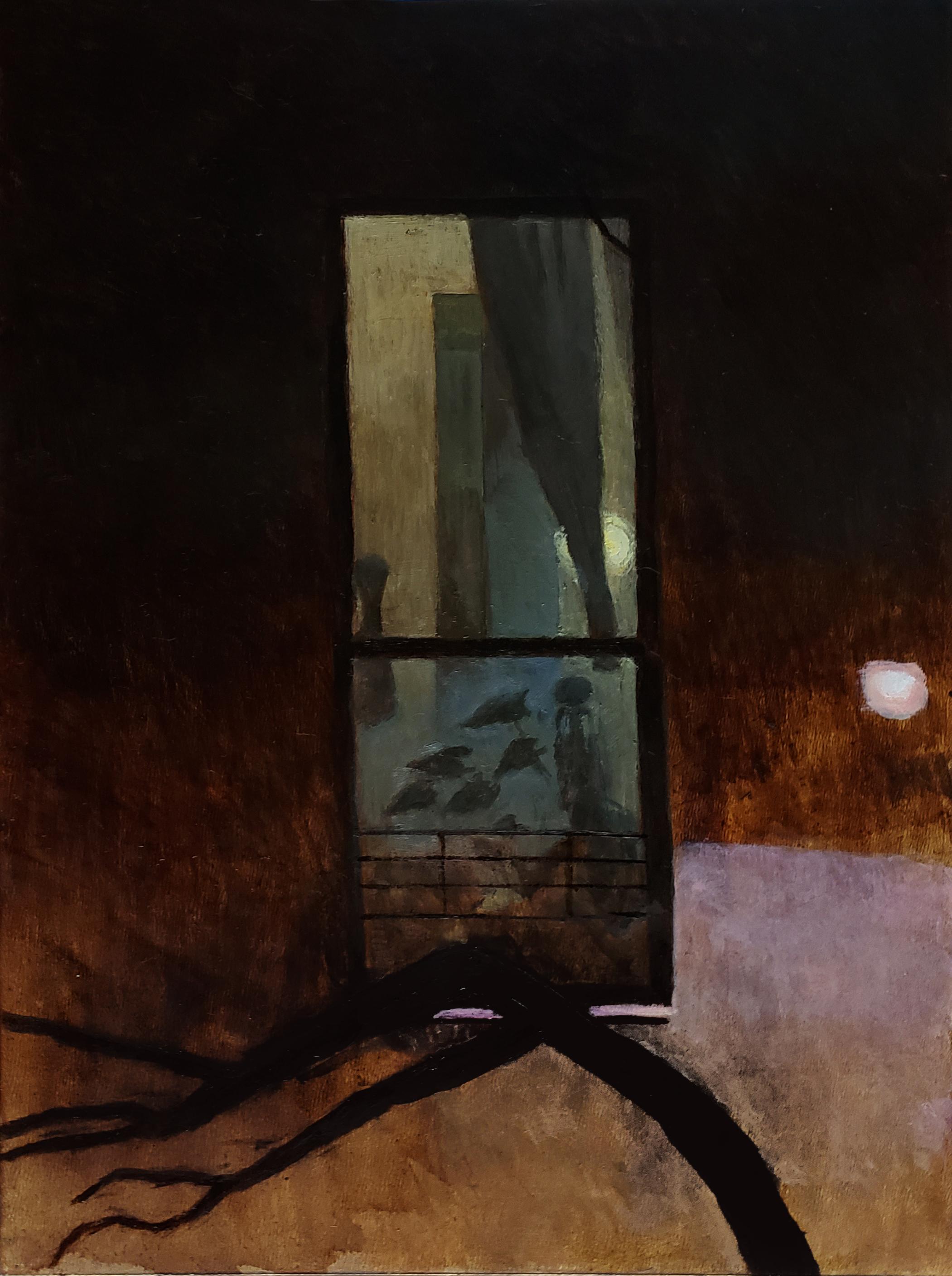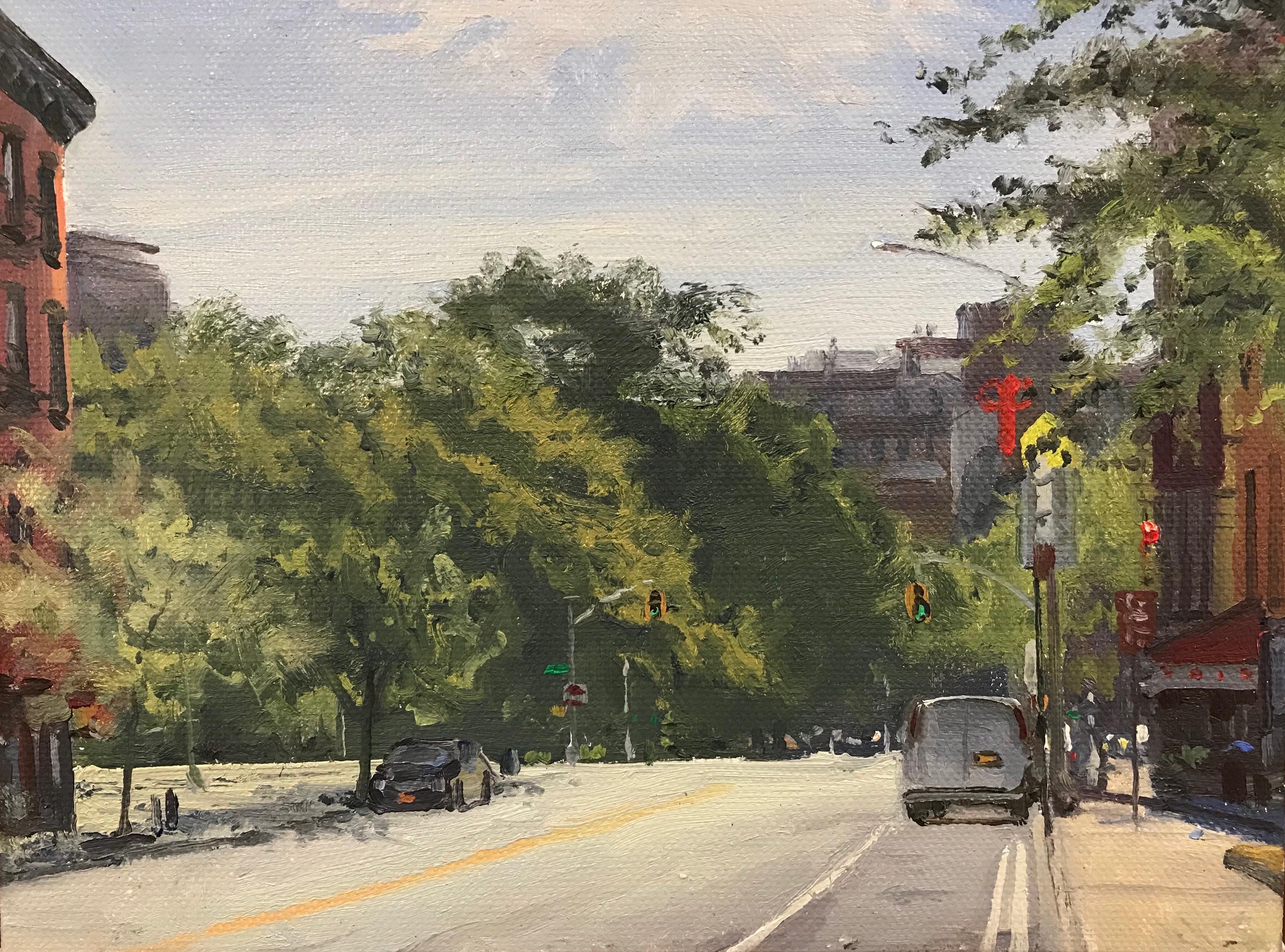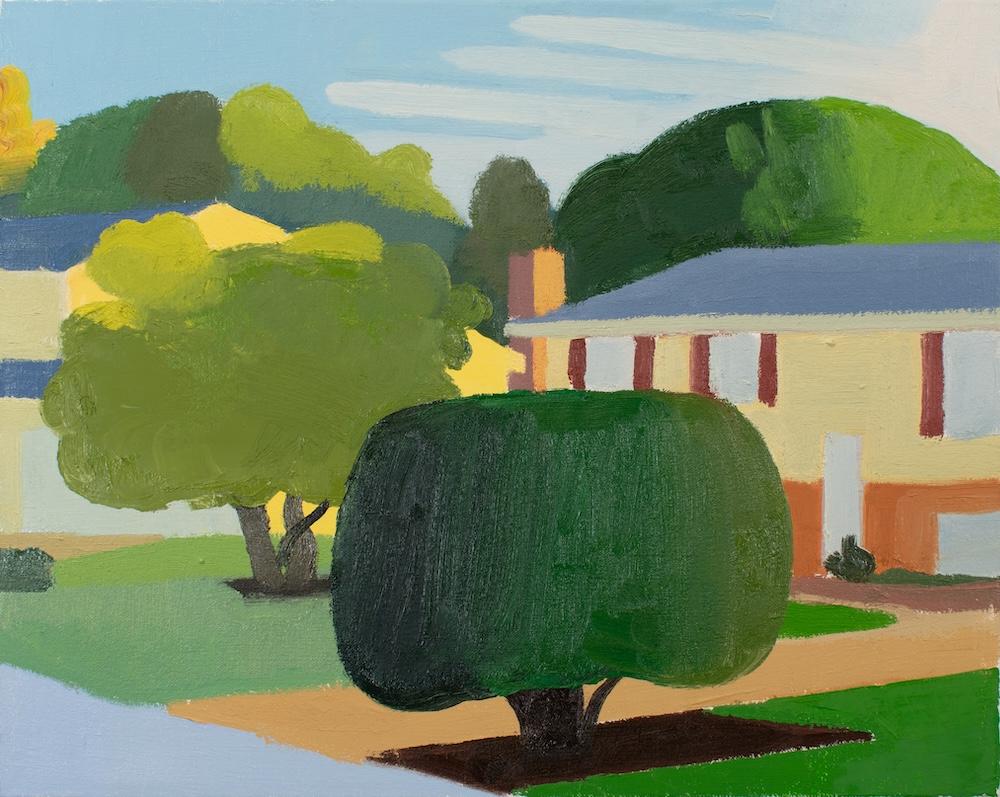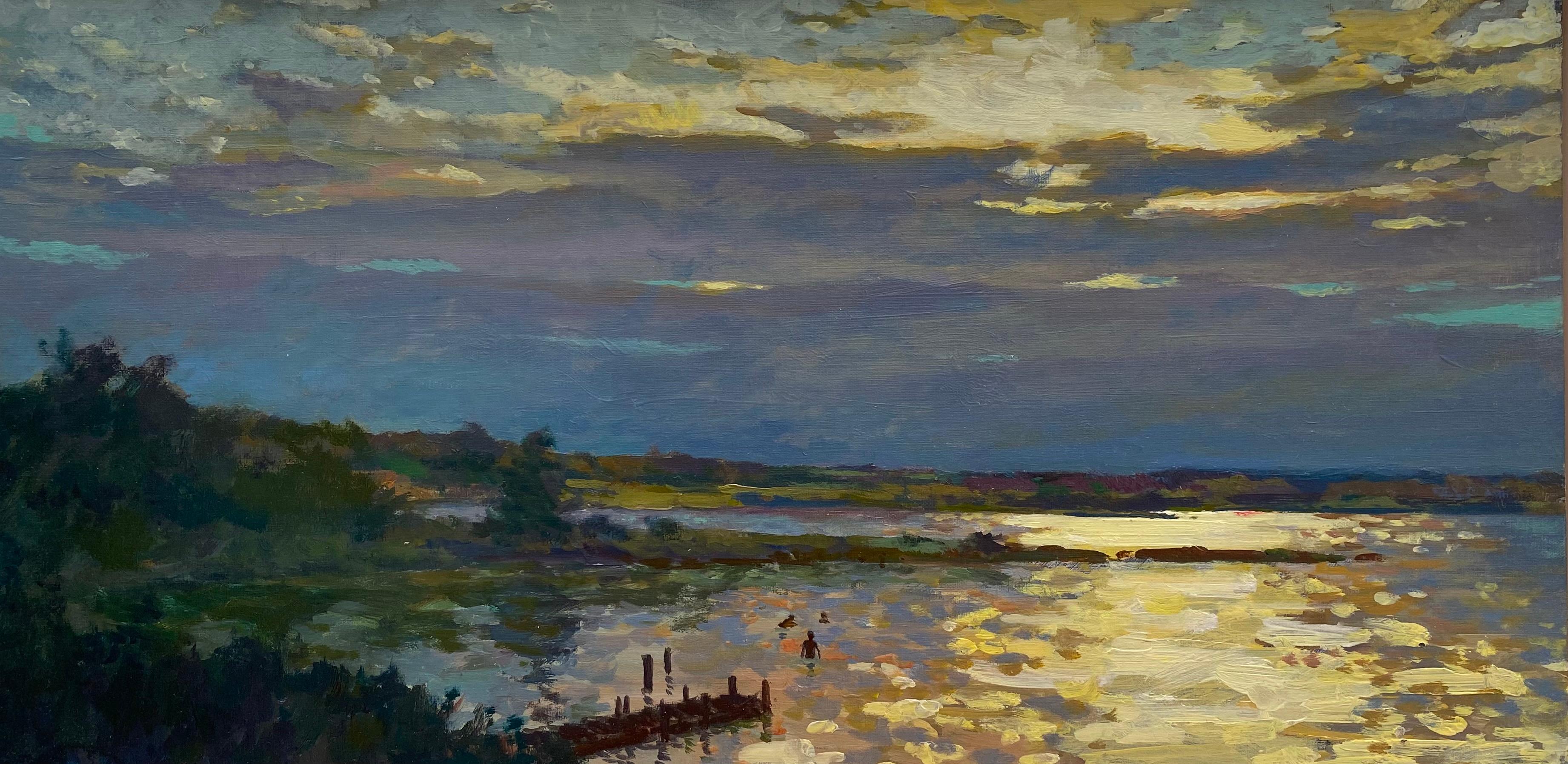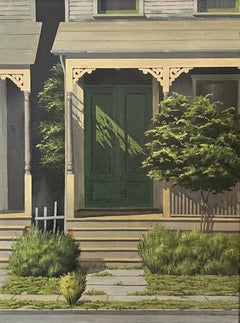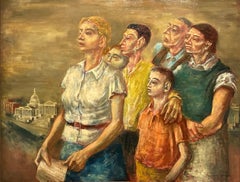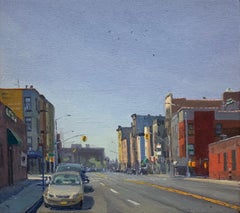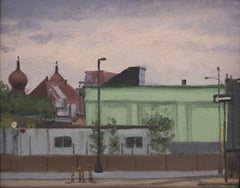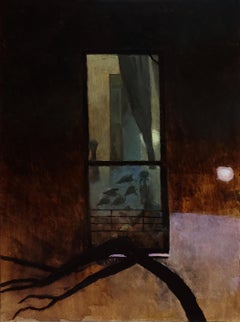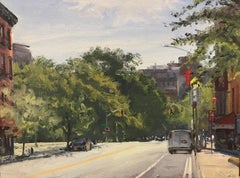Want more images or videos?
Request additional images or videos from the seller
1 of 5
Thomas CraigSix O'Clock
$12,500
£9,280.58
€10,814.44
CA$17,354.04
A$19,411.58
CHF 10,101.90
MX$238,963.19
NOK 128,517.12
SEK 120,574.39
DKK 80,686.48
Shipping
Retrieving quote...The 1stDibs Promise:
Authenticity Guarantee,
Money-Back Guarantee,
24-Hour Cancellation
About the Item
Six O-Clock, c. 1942, oil on canvas, 30 x 20 inches, signed and titled several times verso of frame and stretcher (perhaps by another hand), marked “Rehn” several times on frame (for the Frank K. M. Rehn Galleries in New York City, who represented Craig at the time); Exhibited: 1) 18th Biennial Exhibition of Contemporary American Oil Paintings from March 21 to May 2, 1943 at The Corcoran Gallery of Art in Washington, D.C. #87, original price $450 (per catalog) (exhibition label verso), 2) Craig’s one-man show at the Frank K. M. Rehn Galleries, New York City, from October 26 to November 14, 1942, #10 (original price listed as $350); and 3) Exhibition of thirty paintings sponsored by the Harrisburg Art Association at the State Museum of Pennsylvania in Harrisburg in March, 1944 (concerning this exhibit, Penelope Redd of The Evening News (Harrisburg, Pennsylvania) wrote: “Other paintings that have overtones of superrealism inherent in the subjects include Tom Craig’s California nocturne, ‘Six O’Clock,’ two figures moving through the twilight . . . .” March 6, 1944, p. 13); another label verso from The Museum of Art of Toledo (Ohio): original frame: Provenance includes George Stern Gallery, Los Angeles, CA
About the Painting
Long before Chris Burden’s iconic installation outside of the Los Angeles County Museum of Art, Urban Light, another artist, Tom Craig, made Southern California streetlights the subject of one of his early 1940s paintings. Consisting of dozens of recycled streetlights from the 1920s and 1930s forming a classical colonnade at the museum’s entrance, Burden’s Urban Light has become a symbol of Los Angeles. For Burden, the streetlights represent what constitutes an advanced society, something “safe after dark and beautiful to behold.” It seems that Craig is playing on the same theme in Six O-Clock. Although we see two hunched figures trudging along the sidewalk at the end of a long day, the real stars of this painting are the streetlights which brighten the twilight and silhouette another iconic symbol of Los Angeles, the palm trees in the distance. Mountains in the background and the distant view of a suburban neighborhood join the streetlights and palm trees as classic subject matter for a California Scene painting, but Craig gives us a twist by depicting the scene not as a sun-drenched natural expanse. Rather, Craig uses thin layers of oil paint, mimicking the watercolor technique for which he is most famous, to show us the twinkling beauty of manmade light and the safety it affords. Although Southern California is a land of natural wonders, the interventions of humanity are already everywhere in Los Angeles and as one critic noted, the resulting painting has an air of “superrealism.”
About the Artist
Thomas Theodore Craig was a well-known fixture in the Southern California art scene. He was born in Upland California. Craig graduated with a degree in botany from Pomona College and studied painting at Pamona and the Chouinard Art School with Stanton MacDonald-Wright and Barse Miller among others. He became close friends with fellow artist Milford Zornes during his time at Pamona and both artists also studied under Millard Sheets, who encouraged Craig to paint seriously. During the 1930s and 1940s, Craig taught at the University of California, Occidental College and Chouinard. In 1937, his work was included in a traveling exhibition called “The California Group” which helped cement his reputation as one of the leading California Scene painters. He showed at dozens of other exhibitions as well, including at the California Art Club, the San Diego Art Guild, the Corcoran Gallery, the American Artists Congress, the Golden Gate International Exhibition, the Art Institute of Chicago, the Pennsylvania Academy of Fine Arts, and the Los Angeles County Museum of Art, among other institutions. Craig was awarded prizes by the Los Angeles Art Association, Los Angeles County Fair, Seattle Art Museum, California Watercolor Society, California State Fair, Oakland Art Museum, Laguna Beach Fine Arts Gallery, San Diego Artists Guild, Portland Art Museum, Golden Gate International Exposition. Around the time he painted Six O’Clock, Craig won a Guggenheim Fellowship in 1941 which facilitated travel and further pursuit of his art career. During World War II, Craig served as an artist-correspondent for Life Magazine. After returning from the War, Craig’s artist output slowed, and he devoted most of his time to botany after 1950, making his work relatively rare. He is represented in the permanent collections of the Metropolitan Museum of Art, Seattle Art Museum, San Francisco Museum of Art, California Palace of the Legion of Honor, The Hilbert Museum of California Art, and the Los Angeles County Museum of Art.
- Creator:Thomas Craig (1849 - 1924)
- Dimensions:Height: 20 in (50.8 cm)Width: 30 in (76.2 cm)Depth: 2 in (5.08 cm)
- More Editions & Sizes:20 x 30 inchesPrice: $12,500
- Medium:
- Movement & Style:
- Period:
- Condition:
- Gallery Location:Los Angeles, CA
- Reference Number:1stDibs: LU1859211388952
About the Seller
5.0
Vetted Professional Seller
Every seller passes strict standards for authenticity and reliability
1stDibs seller since 2022
15 sales on 1stDibs
Typical response time: 19 hours
- ShippingRetrieving quote...Shipping from: Los Angeles, CA
- Return Policy
Authenticity Guarantee
In the unlikely event there’s an issue with an item’s authenticity, contact us within 1 year for a full refund. DetailsMoney-Back Guarantee
If your item is not as described, is damaged in transit, or does not arrive, contact us within 7 days for a full refund. Details24-Hour Cancellation
You have a 24-hour grace period in which to reconsider your purchase, with no questions asked.Vetted Professional Sellers
Our world-class sellers must adhere to strict standards for service and quality, maintaining the integrity of our listings.Price-Match Guarantee
If you find that a seller listed the same item for a lower price elsewhere, we’ll match it.Trusted Global Delivery
Our best-in-class carrier network provides specialized shipping options worldwide, including custom delivery.More From This Seller
View AllUntitled
Located in Los Angeles, CA
Untitled, c. 1940s, oil on Masonite, signed lower right, 19 ¾ x 25 ¾ inches
Ava Vorhaus Gabriel was a New York-based painter, lithographer, and designer. Born in Larchmont, Gabriel ...
Category
1940s American Modern Landscape Paintings
Materials
Masonite, Oil
Across the Street
Located in Los Angeles, CA
This painting is part of our exhibition Charles Goeller: A Wistful Loneliness.
Oil on canvas, 16 x 12 inches, Signed lower right
Exhibited:
1) [Solo E...
Category
1940s American Modern Landscape Paintings
Materials
Oil, Canvas
The People
By Arnold Blanch
Located in Los Angeles, CA
The People, 1938, oil on canvas, signed lower right, 36 x 48 inches, label verso reads “348 / 89 / Carnegie Institute, Pittsburgh, PA, USA / _____ The People / _______ Arnold Blanch ...
Category
1930s American Realist Figurative Paintings
Materials
Canvas, Oil
Johnny Walker’s Place
By Georgina Klitgaard
Located in Los Angeles, CA
Johnny Walker’s Place, by 1929, oil on canvas, signed lower right, 34 x 42 inches, exhibited 1) 28th International Exhibition of Paintings, Carnegie Institute, Pittsburgh, PA, Octobe...
Category
1920s American Modern Landscape Paintings
Materials
Canvas, Oil
Peck Slip
Located in Los Angeles, CA
Peck Slip, 1950, oil on cardboard, 15 x 20 inches, exhibition label verso reads: “Oil on cardboard, 20 x 15, 1950 / Title: Peck Slip / Price: $100 / Artist and Owner: Fiske Boyd / 30...
Category
1950s American Modern Landscape Paintings
Materials
Oil, Board
Landscape
Located in Los Angeles, CA
Landscape, c. 1930-40s, oil on panel, signed lower right, 16 x 20 inches
Jeanette Maxfield Lewis was a California-based landscape painter and etcher. Born in Oakland, she spent much...
Category
1930s American Modern Landscape Paintings
Materials
Oil, Panel
You May Also Like
Lawn
By Nicholas Evans-Cato
Located in Fairfield, CT
Represented by George Billis Gallery, NYC & LA --Every painting begins with a place to stand. Sometimes I find one in seconds; sometimes the hunt goes on for many seasons. A canvas c...
Category
21st Century and Contemporary American Realist Landscape Paintings
Materials
Linen, Oil
$1,850
Mint
By Nicholas Evans-Cato
Located in Fairfield, CT
Every painting begins with a place to stand. Sometimes I find one in seconds; sometimes the hunt goes on for many seasons. A canvas can easily frame the everyday. But my task is to t...
Category
2010s American Realist Landscape Paintings
Materials
Linen, Oil
Gem III
By Gregory Frux
Located in Brooklyn, NY
Mansard Window, Oil on canvas, cityscape
Sixth Avenue, Park Slope, Brooklyn
Dr. Rowland S. Russell PhD. writes about his experience directly witnessing Greg's practice as a “plein a...
Category
2010s American Realist Landscape Paintings
Materials
Canvas, Oil
Van
By Nicholas Evans-Cato
Located in Fairfield, CT
Every painting begins with a place to stand. Sometimes I find one in seconds; sometimes the hunt goes on for many seasons. A canvas can easily frame the everyday. But my task is to t...
Category
21st Century and Contemporary American Realist Landscape Paintings
Materials
Linen, Oil
$1,850
Neighborhood
Located in Atlanta, GA
"I grew up as the middle of five kids. We would yearly visit my grandmother in Alabama and later in Tennessee. She was an artist and her house was full of paintings, which was format...
Category
2010s Contemporary Figurative Paintings
Materials
Canvas, Oil
Evening Sun
By Derek Buckner
Located in Fairfield, CT
Derek Buckner is represented by George Billis Gallery NYC and LA. Born in 1970, Derek Buckner lives in Brooklyn, NY, with his wife, novelist Joanna Hershon, their twin sons and daug...
Category
21st Century and Contemporary American Realist Landscape Paintings
Materials
Oil, Panel
More Ways To Browse
Vintage World Clock
Early American Clocks
Frank Golden Painting
Man O War
Vintage Clock Light
Sun Clock
K Thomas
Millard Wells
Vintage Oil Clock
Craig Thomas Paintings
George Stern Fine Arts
George Craig
Vintage Original Palm Tree Paintings
World War 2 Clock
6 Man Clock
George Washington Clock
Barse Miller
18th Century Oil Painting Garden
